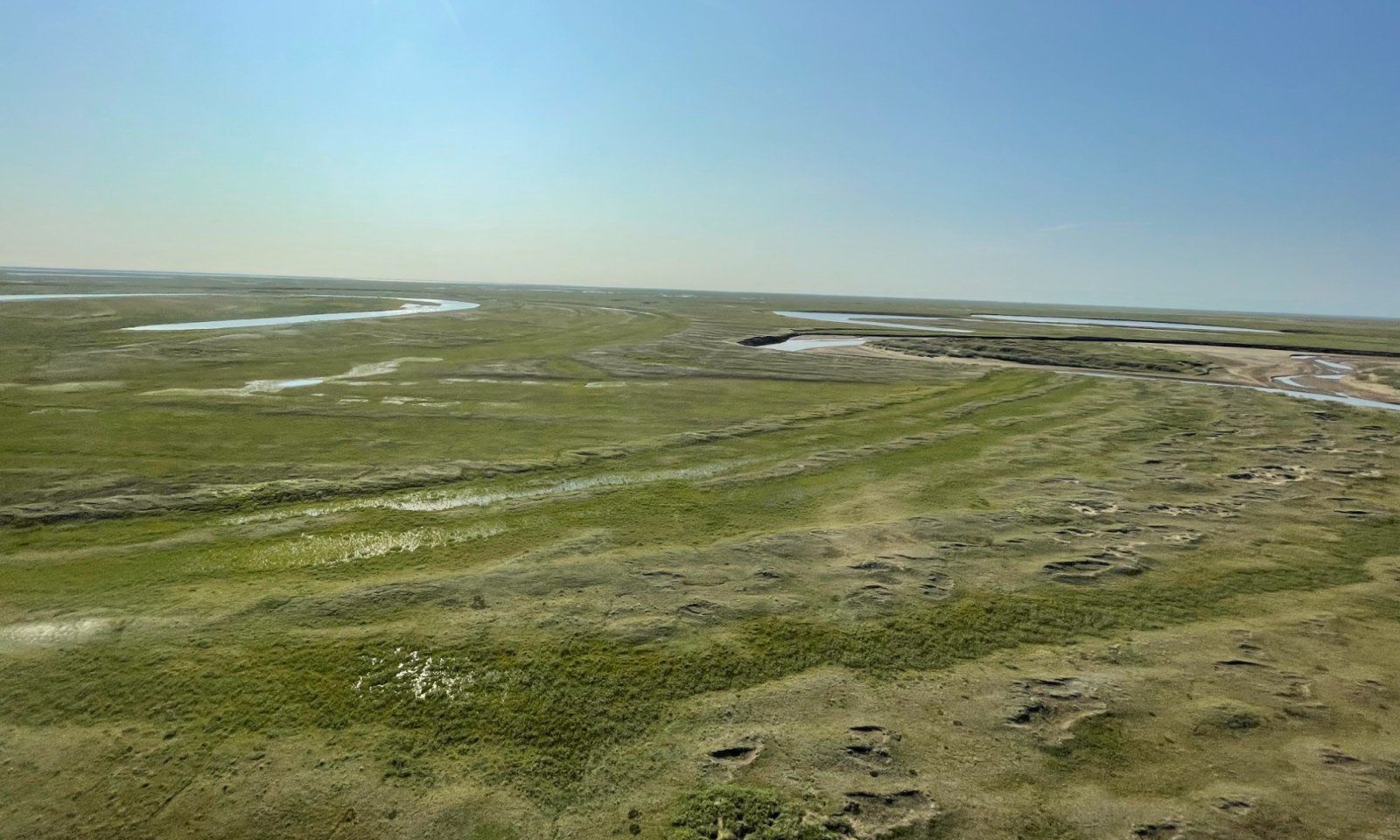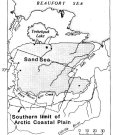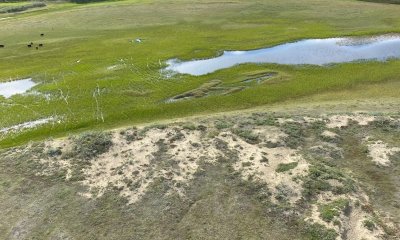
Arctic Dwarf Scrub Sandy Coastal Plain
Scenario model
Current ecosystem state
Select a state
Management practices/drivers
Select a transition or restoration pathway
-
Transition T1
The vegetation on stabilized dune is damaged or destroyed resulting in a blowout.
More details -
Transition T2
Vegetation invades and slowly stabilizes soils taking several hundred years.
More details -
No transition or restoration pathway between the selected states has been described
Target ecosystem state
Select a state
State 1
Reference State




Description
One plant community has been documented within the reference state.
Stabilized dunes are common on stream terraces and slopes of plains throughout the MLRA.
Submodel
Description
One plant community has been documented within the alternate state.
Active dunes are most common near flood plains. Blowouts occur on stabilized dunes throughout this MLRA. The vegetation is sparse and these landforms are often considered miscellaneous areas with bare soil. This state also accounts for unstable soils on lake and river bluffs.
Submodel
Mechanism
The vegetation on stabilized dune is damaged or destroyed. As the ground cover is removed, wind transports sandy soils off the dune resulting in a blowout.
Mechanism
Pioneering willow and graminoids stabilize shifting sands providing habitat for dwarf shrubs, forbs, and lichen to invade. A dwarf scrub mat forms and largely covers previously bare soils. The process of forming stabilized dunes takes hundreds of years (Landfire 2009).
Model keys
Briefcase
Add ecological sites and Major Land Resource Areas to your briefcase by clicking on the briefcase (![]() ) icon wherever it occurs. Drag and drop items to reorder. Cookies are used to store briefcase items between browsing sessions. Because of this, the number of items that can be added to your briefcase is limited, and briefcase items added on one device and browser cannot be accessed from another device or browser. Users who do not wish to place cookies on their devices should not use the briefcase tool. Briefcase cookies serve no other purpose than described here and are deleted whenever browsing history is cleared.
) icon wherever it occurs. Drag and drop items to reorder. Cookies are used to store briefcase items between browsing sessions. Because of this, the number of items that can be added to your briefcase is limited, and briefcase items added on one device and browser cannot be accessed from another device or browser. Users who do not wish to place cookies on their devices should not use the briefcase tool. Briefcase cookies serve no other purpose than described here and are deleted whenever browsing history is cleared.
Ecological sites
Major Land Resource Areas
The Ecosystem Dynamics Interpretive Tool is an information system framework developed by the USDA-ARS Jornada Experimental Range, USDA Natural Resources Conservation Service, and New Mexico State University.


